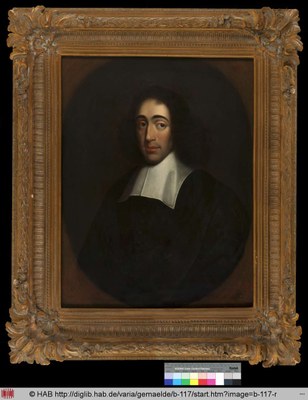Baruch Spinoza (1632–1677)
by
—
last modified
2023-12-07T11:29:17+02:00
© Herzog August Bibliothek Wolfenbüttel
© Herzog August Bibliothek Wolfenbüttel
Portrait of Baruch Spinoza (1632–1677), oil on canvas, 74.0 × 59.8 cm, between 1675 and 1750, unknown (Dutch or German?) artist; source: © Herzog August Bibliothek Wolfenbüttel, http://diglib.hab.de/wdb.php?dir=varia/gemaelde/b-117&image=b-117.
Enlightenment Philosophy@Enlightenment Philosophy@(BE)@freigabe
Religious and Confessional Spaces@Religious and Confessional Spaces@(ÜB)@freigabe
The Dutch Republic, Centre of the European Book Trade in the 17th Century@Dutch Book Trade@(BE)@freigabe

